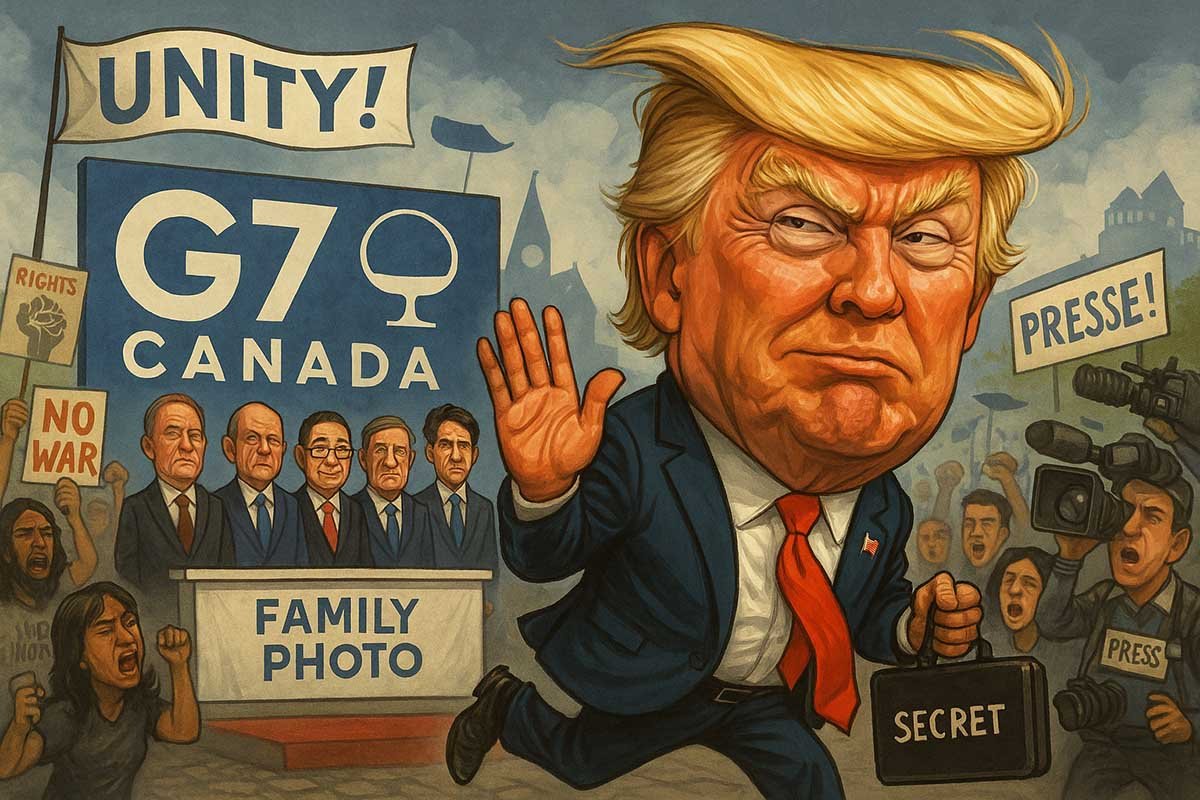The G7 summit in Canada has become the world’s most expensive exercise in group therapy, thanks largely to Donald Trump’s singular approach to diplomacy: disrupt, delay, and—if all else fails—depart early. The gathering opened under a cloud of war in Ukraine, new Middle East crises, and European nerves shredded by Trump’s latest tariff threats, but for those hoping for unity, the message was blunt: you get the world order you deserve.
Trump’s refusal to sign the G7’s final communiqué set the tone. The official explanation was “irreconcilable differences” over Iran and Israel, but off the record, the summit was an exercise in endurance as leaders performed the diplomatic equivalent of speed-dating—with Trump taking every opportunity to tout his own “art of the deal” legacy. The former reality star-turned-president once again called for Russia’s return, pushed for looser sanctions, and made his trademark early exit, citing “important matters” at home.
The UK’s Keir Starmer tried to salvage dignity with a “done deal” on UK-US trade, only to find that Trump had left steel tariffs unresolved, transforming what could have been a celebratory handshake into a diplomatic whoopee cushion. Meanwhile, Mark Carney reportedly struggled to keep economic sanity on the agenda, with reports suggesting his interventions were quickly sidelined by Trump’s staffers.
Throughout, the mood in the press room ranged from resigned to shell-shocked. Live blogs chronicled leaders’ attempts to maintain composure, with summit coverage describing the ritual avoidance of eye contact and the diplomatic grimacing required whenever Trump returned to the topic of sanctions or Russia. He remained firm on his line: no war, no more G7 “consensus” for its own sake.
Out on the streets, protests from Canada’s First Nations and anti-war demonstrators offered reminders of the real-world stakes, but inside, it was a one-man show. Trump repeatedly emphasized “strongly worded concern” over Iran and Israel, while refusing any meaningful escalation or new sanctions—preferring, as ever, to keep his options (and his headlines) open.
Climate action and social pledges were treated as afterthoughts, with Trump’s government touting the Department of Government Efficiency (DOGE)—not a meme coin, but a freshly rebranded policy sledgehammer—promising to trim global bureaucracy, even as G7 negotiations bogged down in pageantry and procedural spats.
As the summit ended, world leaders managed a stilted “family photo,” the only remaining trace of G7 unity. The rest, as the coverage makes clear, was pure Trump: leaving early, rewriting the rules, and—once again—ensuring the G7 is a stage for American spectacle, not Western solidarity.
For those still searching for silver linings, one persists: at least this year’s summit didn’t end in a group walkout—just a collective, quietly exasperated sigh as Trump’s motorcade rolled away.
